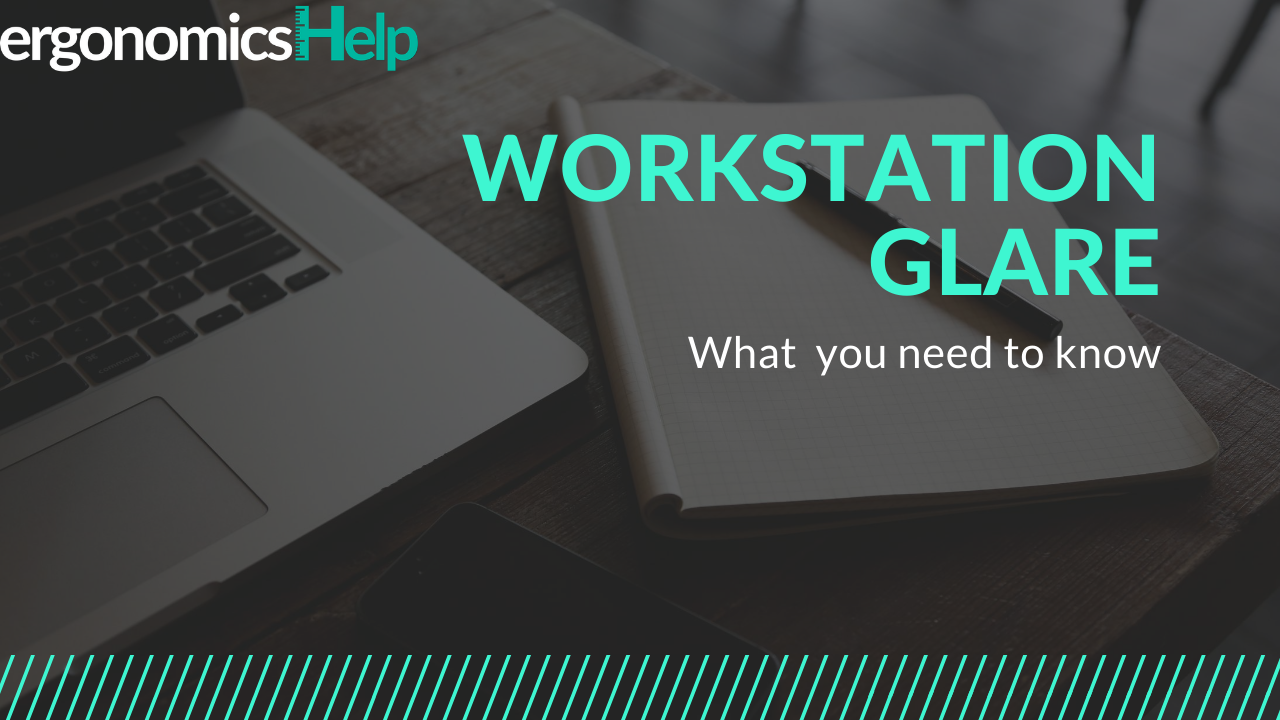How To Pinpoint Glare In Ergonomic Assessments
Aug 20, 2020
Ok, ok. In this post not only am I going to share some key insights to improve your assessments, but I'm giving you a FREE download:

To download this FREE "Is Workstation Glare A Concern For Your Client" Infographic just click here.
This post is from a recent Masterclass that I did for my Accelerate Program.
Accelerate helps Ergonomics Professionals find more clients and make more revenue doing ergonomics services. Each month I share 4 time saving deliverables including:
- an Infographic that you can White Label with your logo;
- a monthly Masterclass;
- a monthly Coaching Call; and
- a monthly Curated Literature Review.
In this Masterclass it was all about how to identify and remedy glare during an office ergonomic assessment.
So, without further adieu let's jump into this blogpost where I'm going to share with you actionable steps about... GLARE! Let's do this.
How To Determine If Glare Is An Issue For Your Clients
When you approach an assessment, how do you determine if glare is a factor?
This is a HUGE concern for Ergonomics Professionals wanting to provide high-level ergonomics solutions to their clients.
We want to be able to pinpoint problems so we can come up with just-the-required solutions. Doing this allows us to charge our clients the "big bucks" for our services because what we offer is so impactful and valuable!
Clue #1 If Glare is a Concern for your Client:
If someone mentions any of these when you're either booking a client or going through a client interview then it is very likely that Glare is a concern (but there are more tests that we can do... hint: next section):
- Difficulty seeing information (too much light or glare or too little light and shadows)
- Eyestrain (burning, blurry, or watery eyes)
- Headaches
- Annoyance from flickering lights or excessive light
- Neck pain (from leaning forward or bending the neck downwards due to inadequate light levels or to avoid glare).
Clue #2 If Glare is a Concern for your Client:
As the assessor when you come into someone's workstation, there are a few simple and effective strategies that you can test to determine if glare is an issue for your client (even if they haven't complained of any of Clue #1 symptoms):
- You see reflected light on the screen
- You feel relief when you cover your eyes (like a visor)
- The choice of colours in the office
- It's very bright
- Location of windows
- Position of lights
- No curtains
- Colour and finish of walls, furniture
What We're Really Doing Here
We're establishing a number of workstation aspects that can contribute glare. These are:
- if there is too much light,
- not the right type of light,
- not the correct positioning of light, or
- if there is too little light in your client's workspace.
Of course just examining light is not as simple as it sounds, as there's a lot of confounding variables that we have to take in as well: colour and finish of the walls and working surface.
Often, there's a really slow shift in glare factors negatively affecting those working in the office.
Some of the worst glare cases that I've ever seen are from brand-new open concept offices that have a lot of natural light combined with no blinds and all white interiors.
...ouch!
Solutions
Whenever I'm recommending an ergonomic solution to a client it falls under these 4 categories:
- Engineering
- Administrative
- Behavioural
- Personal Protective Equipment
By far the most effective type of solution is the Engineering type because the ergonomic risk is essentially "engineered out" of the workstation with either adjusting what your client already has to better suit them or providing new equipment that eliminates the ergonomic risk.
This is so effective because you're not relying of work habits or schedules to fix any ergonomic challenges, it's that they don't even exist anymore.
[MIND BLOWN]
These types of solutions work the best with Glare:
- Ensuring that the brightness is just right for the working environment
- Fluorescent tubes + Task lighting
- Full-spectrum lights
- Ensuring the correct orientation next to window
- Right angle & in between tubes
- Ensuring that the type of environment can be controlled
- Venetian blinds
- Ensuring that the walls and work surfaces are painted a colour that's conducive for viewing comfort
- Ensuring that the monitor brightness and angle are set-up for optimal brightness and reflectance
Want more?
If you haven't yet download that EPIC "How To Identify Workstation Glare For Your Client" infographic here.

If you like what I'm throwing down you have a few options here on how we can work together:
If you're just starting out in your ergonomics career and you'd like to learn more about how to to get into ergonomics I have a brand new free training about how to get started in ergonomics, that you can click here to sign-up for.
If you're already a Professional Ergonomist and you'd like to learn more about finding more clients and bringing in more revenue with your ergonomics business, just click here to learn more. There, you can sign-up to the waitlist. I only open enrolment a few times per year and you'll find out when it opens next on this page!
